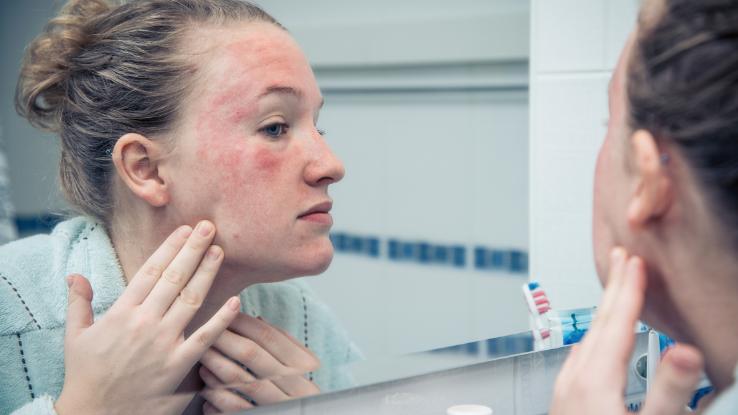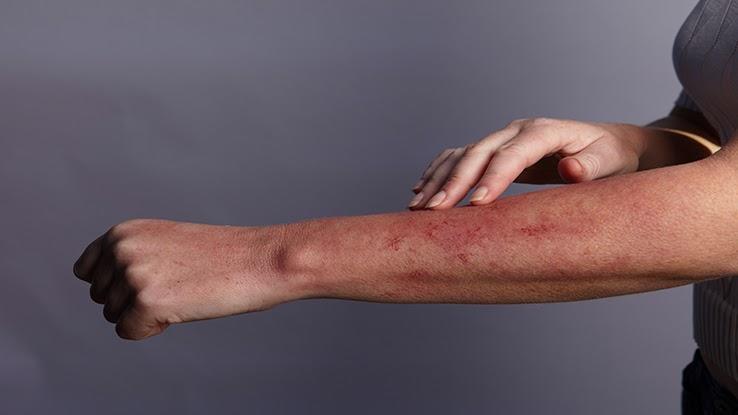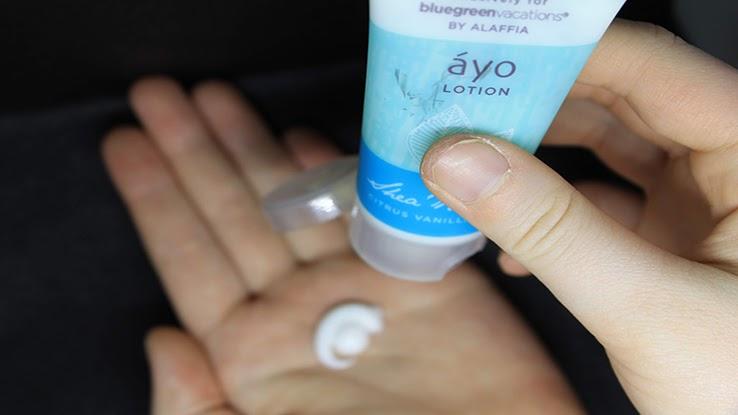
Atopic dermatitis is an inflammatory skin condition characterised by dry, itchy skin, which often comes and goes in a relapsing-remitting fashion. Living with atopic dermatitis can be frustrating, but there are many treatment options available, even for those with severe symptoms. However, just as important as finding the right treatment is learning how to minimize or prevent symptomatic flares.
What Is Atopic Dermatitis?
Atopic dermatitis is the most common type of eczema, and, in fact, the term “eczema” is often used synonymously with atopic dermatitis. It affects people of all ages, and usually first presents in early childhood, before the age of 5. Some children outgrow the condition entirely, but for many it reappears in adulthood.

It’s usually chronic, and symptoms can come and go as “flares” or “relapses,” which occur with varying frequency. Atopic dermatitis is more common in those with a family history of the condition, and in those who have other atopic conditions such as allergies, hay fever (allergic rhinitis) and asthma.
What Are the Symptoms of Atopic Dermatitis?
The hallmark symptoms of atopic dermatitis include a red, itchy rash that tends to get worse at certain times, often with identifiable triggers. The rash typically affects areas known as the “extensor surfaces,” which include inner elbows; the back of the knees; and the inner wrists and ankles. In infants, the rash also typically affects the cheeks, forehead and scalp.

However, despite appearing most often on extensor surfaces, atopic dermatitis can affect any part of the skin surface. Impacted skin can become incredibly dry, cracked and scaly; additional physical damage may occur if the patient scratches the rash. Damaged skin can become infected, leading to redness, pus and sores. Over time, damaged skin can become thickened, known as lichenification, which appears as rough white areas.
What Causes Atopic Dermatitis?
The exact cause of atopic dermatitis is a combination of genetic and environmental factors. The fundamental problem in atopic dermatitis is dysfunction of the parts of the immune system related to maintaining the skin. This results in the skin being less able to maintain moisture and protect against irritants, bacteria and allergens. The environment also plays a role, with atopic dermatitis being more common in those living in urban areas compared with rural areas.

Research has also shown that some people with eczema and atopic dermatitis lack sufficient filaggrin, a protein which helps form a protective barrier on the surface of the skin. Without this barrier, moisture tends to escape and can allow viruses and bacteria to enter the skin. Along with the trauma caused to an affected area by repeated scratching, this lack of moisture makes the skin especially prone to infections.
What’s the Best Way to Treat Atopic Dermatitis?
There is currently no cure for atopic dermatitis, but there are many treatments available to help relieve symptoms. The first-line treatment option includes topical therapies, such as creams and ointments applied directly to the skin.

The most commonly recommended topical therapy involves an emollient. Emollients are moisturizers recommended to be used every day, regardless of if symptoms are present or not. These function to keep the skin in good condition and reduce the frequency of flares. Emollients come in many different forms, from thin lotions to thick ointments. Thin lotions are useful for areas of the skin that are hairy, or for areas that are wet and weepy due to infection. Thicker creams are best for everyday use since they are very good at moisturizing and easy for the skin to absorb. Finally, ointments are more greasy, making them more suited to areas of particularly thickened skin. Typically, ointments are applied at night to reduce transfer to clothing and to allow adequate time for the skin to absorb them.
When the skin is actively inflamed during a flare, topical treatment using corticosteroids is often recommended. Steroids function to dampen the hyperactivity of the immune system and reduce inflammation. Treatment with topical steroids is usually reserved for use only during flares, as long-term application can cause thinning of the skin. Corticosteroids come in different forms and strengths, and treatment usually starts with the lowest-strength of steroid, only increasing if symptoms are not controlled.
If symptoms remain uncontrolled, the addition of a non-steroidal topical calcineurin inhibitor (e.g. tacrolimus or pimecrolimus) may be recommended. These creams can minimize symptoms and help to repair the skin by targeting cells and molecules of the immune system.
Some cases may not respond to traditional treatment options and might require additional treatments. Oral corticosteroids are an option for moderate to severe cases but are not intended for long-term use because of the potential for serious side effects. Ultraviolet light therapy is also sometimes used in cases of atopic dermatitis that has not responded to topical therapies.
New treatments are also emerging. Biological therapy, for example, alters the production of certain chemicals in the body, directly “turning off” those that cause the inflammation in atopic dermatitis. These therapies are normally injected into the skin or administered into a vein as an infusion and are reserved for patients with very severe atopic dermatitis.
Additional medications may also be required. For example, antibiotics may be prescribed if the skin becomes infected, while antihistamines can be helpful if itching is particularly bothersome or disturbing sleep. With all of this in mind, treating atopic dermatitis isn’t always straightforward and may require trying several methods before finding the best solution. It’s also important to remember that atopic dermatitis is characterized by periodic flares followed by remission, which means that symptoms can return at any time.
Often, people with atopic dermatitis can identify “triggers,” which cause a flare or worsening of symptoms. Common triggers include certain fabrics; excessive heat and sweating; soaps and detergents; and stress. It might be helpful to keep a diary of symptoms in an effort to identify these triggers. Additionally, all patients with atopic dermatitis are advised to follow certain preventative measures, such as using a daily moisturizer; reducing exposure of the skin to hot baths and showers; and avoiding the use of skin products that contain too many additives.
Resource Links:
- National Eczema Association (2020). What is atopic dermatitis? Available at https://nationaleczema.org/eczema/types-of-eczema/atopic-dermatitis/ [Accessed 16th December 2020]
- The American Academy of Dermatology Association (2020). What is atopic dermatitis? Available at: https://www.aad.org/public/diseases/eczema/types/atopic-dermatitis [Accessed 16th December 2020]
- BMJ Publishing Group (2019). BMJ Best Practice: Eczema. Available at https://bestpractice.bmj.com/topics/en-gb/87 [Accessed 16th December 2020]
- NHS (2019). NHS Conditions: Atopic eczema. National Health Service. Available at https://www.nhs.uk/conditions/atopic-eczema/ [Accessed 16th December 2020]
- The National Eczema Society (2020). Available at: https://eczema.org/ [Accessed 16th December 2020]
- Medline Plus (2017). Atopic Dermatitis. Available at: https://medlineplus.gov/genetics/condition/atopic-dermatitis/ [Accessed 16th December 2020]
- NICE (2018). Clinical Knowledge Summary: Eczema – Atopic. National Institute of Clinical Excellence. Available at https://cks.nice.org.uk/topics/eczema-atopic/ [Accessed 16th December 2020]





